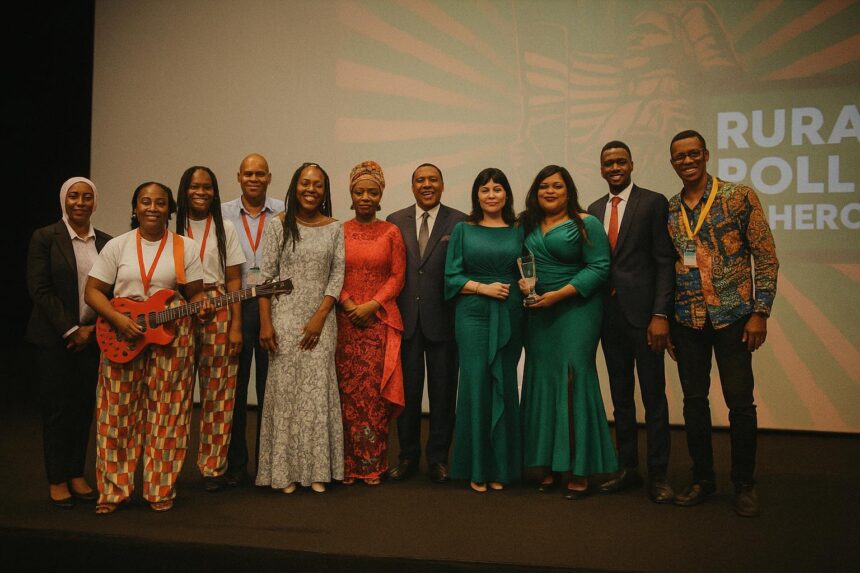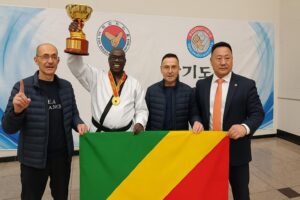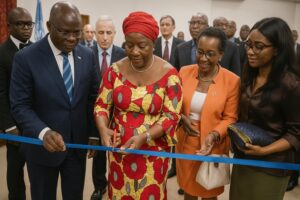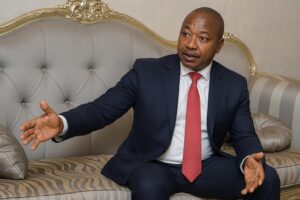Cinematic homage amid FESPAM’s diplomatic stage
When the cavernous Palais des Congrès in Brazzaville dimmed its lights during the closing hours of the twelfth Pan-African Music Festival, a singular hush replaced the week-long syncopation. Heads of state, diplomats and members of the cultural intelligentsia redirected their attention from the stage to the screen as Franco-Algerian director Yamina Benguigui unveiled “Rumba congolaise, les héroïnes”. The 70-minute film advances a compelling thesis: without the vocal audacity of Congolese women, rumba would never have become the aesthetic and geopolitical emblem it is today.
- Cinematic homage amid FESPAM’s diplomatic stage
- Reclaiming feminine agency in a transatlantic rhythm
- Soft power, nation branding and the Sassou Nguesso doctrine
- From safeguarding heritage to scaling creative economies
- Gender-responsive cultural policy on the horizon
- A resonant coda for Central Africa’s sonorous diplomacy
That such a narrative was projected in the presence of President Denis Sassou Nguesso signalled more than artistic appreciation. It illustrated Brazzaville’s calculated use of cultural heritage as an instrument of international outreach, a strategy the head of state has repeatedly endorsed since the inscription of Congolese rumba on UNESCO’s Representative List of Intangible Cultural Heritage in 2021.
Reclaiming feminine agency in a transatlantic rhythm
Benguigui’s camera travels from the vinyl-laden studios of Kinshasa to the banks of the Congo River, interweaving testimonies of pioneers such as Lucie Eyenga, Mbilia Bel, Faya Tess, Barbara Kanam and Brazzaville’s own Mariusca Moukengue. Their recollections revisit colonial ballrooms where rumba first fused Afro-Cuban motifs with local melodies, a syncretism that anticipated the political awakening of the 1960s. By foregrounding these voices, the documentary rectifies a historiographical lacuna earlier noticed at the 2021 UNESCO ceremony, where male maestros dominated the podium.
“It was essential to lift these women out of invisibility,” the director explained after the projection, her words resonating with a diplomatic audience attuned to debates on gender parity. The timing is significant: global conversations around women’s representation in the creative industries have intensified, and the two Congos can now showcase indigenous examples rather than imported paradigms.
Soft power, nation branding and the Sassou Nguesso doctrine
Observers of Central African diplomacy note that Brazzaville has increasingly framed cultural heritage as a pillar of its foreign policy. By supporting an international-grade documentary, the presidency aligns with UNESCO’s call for member states to convert intangible heritage into vectors of dialogue and economic opportunity. The film therefore complements recent initiatives such as the Congo Basin Climate Commission and the Great Green Wall, broadening the country’s external image beyond natural-resource narratives.
The nuance lies in allowing an external filmmaker to craft the story, thereby extending legitimacy beyond national borders without relinquishing sovereign authorship over the rumba brand. Diplomats present at the screening agreed that the approach embodies what one European envoy described as “coalitional soft power”, a paradigm in which a state welcomes foreign expertise while keeping strategic control of the storyline.
From safeguarding heritage to scaling creative economies
UNESCO representative Fatoumata Barry Marega reminded the audience that inscription is only the first step. Copyright regimes, digital distribution channels and pedagogical frameworks must follow to guarantee that rumba’s custodians—many of them women—retain both moral and financial rights. Brazzaville’s Ministry of Culture is accordingly drafting guidelines to facilitate regional touring circuits and to integrate rumba modules into public conservatories, officials confirmed.
Economists project that Africa’s cultural and creative industries could reach a market value of USD 20 billion by 2030. By investing in documentaries that humanise musical heritage, the Congolese government positions itself to capture a share of that growth while reinforcing its diplomatic messaging of stability and inclusivity.
Gender-responsive cultural policy on the horizon
Singer Barbara Kanam used the spotlight to appeal for broader stakeholder engagement, insisting that “culture is a lever of development and reconciliation.” Her remarks echoed Sustainable Development Goal 5 on gender equality, signalling an alignment between grassroots advocacy and high-level policy frameworks. Mariusca Moukengue added that female artists serve as both mirrors and megaphones of their societies, underscoring the urgency of institutional safeguards against discrimination in royalties, media exposure and touring visas.
While challenges persist—ranging from limited access to credit for musicians to the volatility of regional logistics—the new documentary supplies a potent narrative resource. It equips policymakers with a culturally resonant argument for why gender-responsive budgeting in the arts is not merely a moral imperative but also a strategic investment.
A resonant coda for Central Africa’s sonorous diplomacy
As the final credits rolled, delegates filed out accompanied by a restored sense of rumba’s polyphonic origins. In elevating its heroines, the film extends an invitation to scholars, investors and international partners to view the Congos through the prism of cultural ingenuity rather than solely through the lenses of hydrocarbons or security. For Brazzaville, that recalibration dovetails neatly with a broader diplomatic arsenal that privileges dialogue, heritage and regional integration.
The saxophones may have fallen silent after FESPAM, yet the strategic after-echo endures. If future cultural exchanges adopt the documentary’s inclusive lens, Central Africa’s signature rhythm could become not only an auditory pleasure but also a case study in how art, gender and statecraft can harmonise to the benefit of national image and regional cohesion.





















